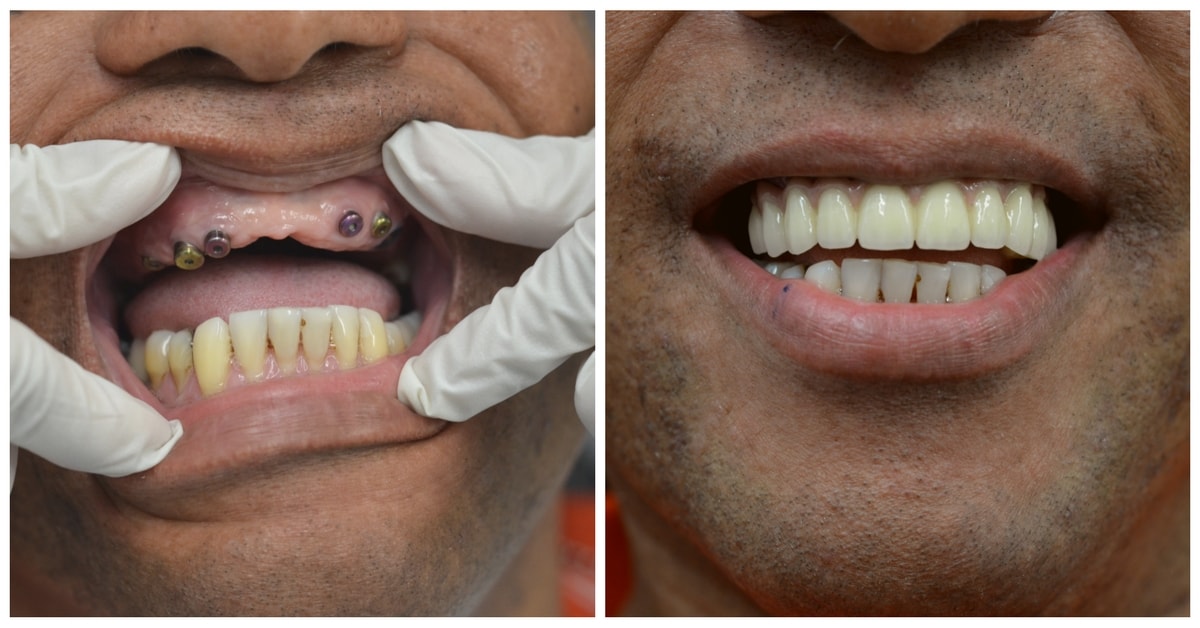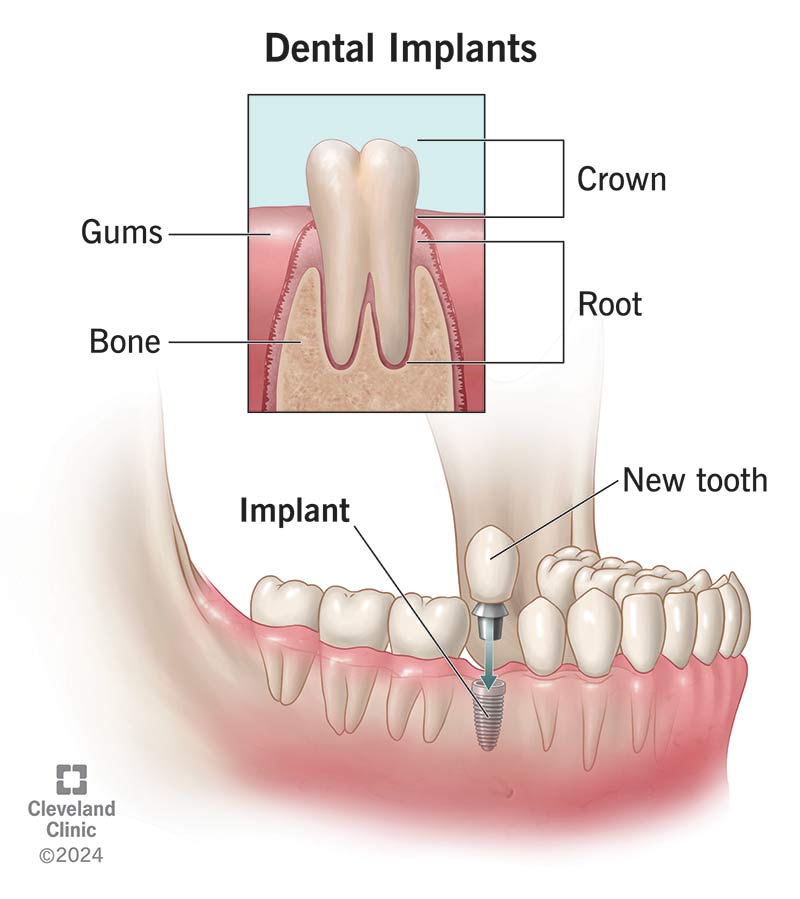4 Simple Techniques For Dental Implants
Table of ContentsDental Implants Can Be Fun For EveryoneDental Implants for BeginnersTop Guidelines Of Dental ImplantsDental Implants - The Facts
are medical tools surgically dental implanted right into the jaw to recover a person's ability to chew or their appearance. They give support for man-made (fake) teeth, such as crowns, bridges, or dentures. When a tooth is lost as a result of injury or disease, an individual can experience complications such as quick bone loss, defective speech, or adjustments to eating patterns that lead to discomfort.
Structure of The Dental Implant System choosing dental implants, talk to your dental supplier about the prospective benefits and dangers, and whether you are a prospect for the procedure. Points to consider: Your general wellness is a vital consider determining whether you are a great prospect for oral implants, how much time it will take to heal, and how much time the implant might remain in area.
Smoking cigarettes may influence the healing process and reduce the lasting success of the implant. The healing process for the dental implant body may take a number of months or longer, throughout which time you usually have a short-lived joint in location of the tooth. the dental implant treatment: Carefully comply with the oral health directions offered to you by your dental service provider.
Unknown Facts About Dental Implants
Implant failure can lead to the requirement for an additional procedure to fix or replace the dental implant system. Brings back the capability to chew Recovers cosmetic appearance Helps keep the jawbone from reducing due to bone loss Protects the health and wellness of the bordering bone and periodontals Helps keep adjacent (nearby) teeth stable Boosts high quality of life Damages to surrounding natural teeth during dental implant placement Injury to the surrounding tissues during surgery, such as sinus opening Injury throughout surgery (for instance, crack of surrounding jawbone) Poor function, such as seeming like the teeth do not attack with each other typically An experience that the tooth is loosened or twisting in position resulting from a joint screw loosening up Implant body failure (looseness of the implant body) as a result of systemic infection, which might be extra most likely in clients with unchecked diabetes mellitus as a result of regional infection in bone and gums sustaining the dental implant body because of postponed healing, which might be most likely in individuals who smoke Trouble cleaning up the gums around the implant, causing poor dental hygiene Untreated periodontal illness Post-surgical numbness as a result of nerve impingement or damages Constantly notify wellness care service providers and imaging technicians that you have oral implants before any kind of magnetic resonance imaging (MRI) or x-ray procedures.
FDA is not conscious of any negative events reported for MRI or x-ray procedures with oral implants. Dental implants systems are typically made from products that follow international agreement criteria of the International Organization for Standardization (ISO) or ASTM International. These requirements have details of what makes a safe product.
Other products such as gold alloys, cobalt-based alloys, titanium alloys, or ceramic products are occasionally utilized. The safety accounts of these materials are well-known. Dental dental implant systems are reviewed according to international consensus requirements. Biocompatibility testing, to reveal that physical call with the device my explanation does not cause problems like irritation or sensitive response, becomes part of the analysis that aids ensure the materials in the dental implant system are risk-free and do not trigger unfavorable effects when dental implanted in individuals.

Some Known Questions About Dental Implants.
Some individuals are not qualified for oral implant surgery. It is for dental specialists to operate people with: severe illnessuncontrollable metabolic diseasebone or soft tissue illness or infectionIf these problems are solved, an individual can have the surgical treatment. Dental Implants. In, dental surgeons refrain from running on individuals with: If people with any one of the above undertake dental implant surgical treatment, there is a higher danger of the implant stopping working
Some people have a jawbone abnormality that protects against adequate bone for a dental implant from creating. In such situations, a cosmetic surgeon may need to perform navigate to this site a ridge alteration. This entails raising the gum to expose the area of flawed bone. The specialist will then use a bone or bone substitute to fix and develop up the area.
Oral dental implant surgical procedure is a customized procedure. Give you time to recover. Affix the blog post and final crown, bridge or denture.
Next, your doctor will thoroughly place the oral implant into your jaw. Ultimately, your surgeon will reposition your gum tissues and close the cut with stitches. If your dental implant is near the front of your mouth, your dental practitioner will certainly make a short-term tooth for you to wear until you heal. By doing this, you will not have a void in your smile while you recuperate.
The Dental Implants PDFs
Your provider can tell you what to anticipate in your circumstance. During the healing phase, your jawbone needs to fuse to the oral implant. This process, called osseointegration, is critical for stability and long-term success. This procedure can take anywhere from 3 to nine months. In many cases, it may take longer.
As soon as your implant heals, your dental expert can connect the abutment (tiny adapter blog post) and your last repair (crown, bridge or denture). This typically takes regarding one hour to complete and may require a 2nd small surgical treatment. You shouldn't really feel any type of discomfort throughout your oral implant read more procedure due to the fact that your supplier will certainly utilize medication to numb your gum tissues.